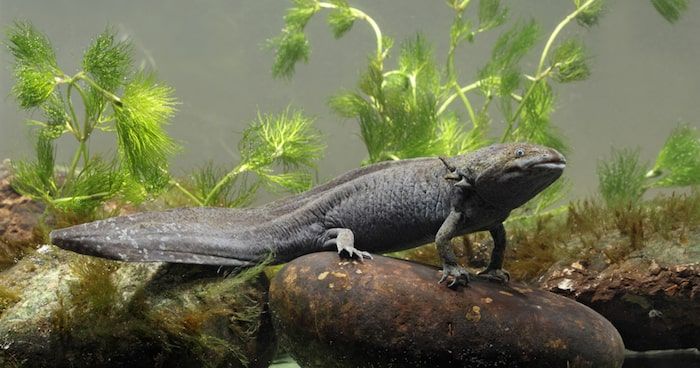Salamanders and Limbs: A Quest for Regeneration and Survival
The Xochimilco salamander, also known as the Mexican axolotl, is a unique amphibian species that is found in Mexico. But the number of this species is going down because of pollution in the canals and rising temperatures caused by climate change.

For 17 years, Jesús Chimal Monroy, a researcher at the Institute of Biomedical Research (IIBO) of the UNAM, has been studying the salamander (Ambystoma mexicanum) to understand the basic mechanisms of limb regeneration. In his lab, they work with the chicken embryo and the salamander to see how limbs regenerate. He explained that if one of them has a complete limb amputated, it regenerates again.
His interest is in knowing the basic mechanism by which this process happens. One of the molecules that regulates embryonic development is retinoic acid, a derivative of vitamin A. When salamanders with missing limbs are given retinoic acid, a new limb grows from where the limb was cut off, no matter where it was cut. This phenomenon is called proximal-distal limb duplication.
Chimal Monroy is also interested in understanding how skeletal patterns are established. He mentions that there is evidence that humans between one and four years of age can regenerate the tip of the finger, but only if the amputation occurs at the level of the nail and not if a larger amount of tissue is involved. He hopes that by understanding how a salamander regenerates, they can understand why a human does not.
International Efforts to Restore the Xochimilco Salamander's Ecosystem
The population of the Xochimilco salamander, which is also called the Mexican axolotl, is in danger because of a disaster in the canals and a rise in temperature. But an international project is working to restore the amphibian's ecosystem and its interactions with other organisms.
The project, called "Management and Identification of Key Problems in Selected Sites for the Sustainable Reintroduction of the Salamander 2019–2022," is led by researcher Diego Chaparro Herrera and funded by organizations such as the Earthwatch Institute, EY, and REDES.
As part of the research, farmers in the area are getting resources and workshops on how to do organic farming and how to sell their crops in a fair way. The end goal is to protect the environment in Xochimilco and get the salamander species back into the area.
Threats to the Salamander's Survival and Efforts to Preserve the Species
The Xochimilco salamander, also known as the Mexican axolotl, is a unique amphibian species that is found in Mexico. It is known for its cultural and scientific importance and has been featured in museums, books, art, and even on the new Mexican 50-peso bills. But the number of this species is going down because of an environmental disaster in the canals and rising temperatures caused by climate change.
A researcher from the Faculty of Higher Education (FES) in Iztacala, Diego Chaparro Herrera, explained that it is becoming difficult to reproduce the salamander in the laboratory, so they are transferring adult organisms to a colder and less polluted area in Tepotzotlán to try to improve the survival rate. But the researcher warns that much more needs to be done to protect this species, including regulating water quality and controlling invasive species, as well as addressing the impact of human presence on the salamander's habitat.
Inbreeding Threatening the Survival of the Wild Xochimilco Salamander
Scientists from the Environmental Analysis Laboratory of the Faculty of Sciences and organizations like Earthwatch Institute, EY, and REDES have found that inbreeding is a major problem for the wild Xochimilco salamander. They discovered this after visiting exclusive areas of San Gregorio Atlapulco, a town in Xochimilco, where they found pureblood salamanders that had not mixed with other populations.
Inbreeding leads to genetic recombination that contributes to the loss of the salamander. Because of this, some species are weak and vulnerable, like the albino or "rosita" salamander, which is often bred to sell as a pet. It is difficult to determine the number of salamanders in the colonies as they are typically counted per aquarium, and in the wild, they are caught in fishing nets.




